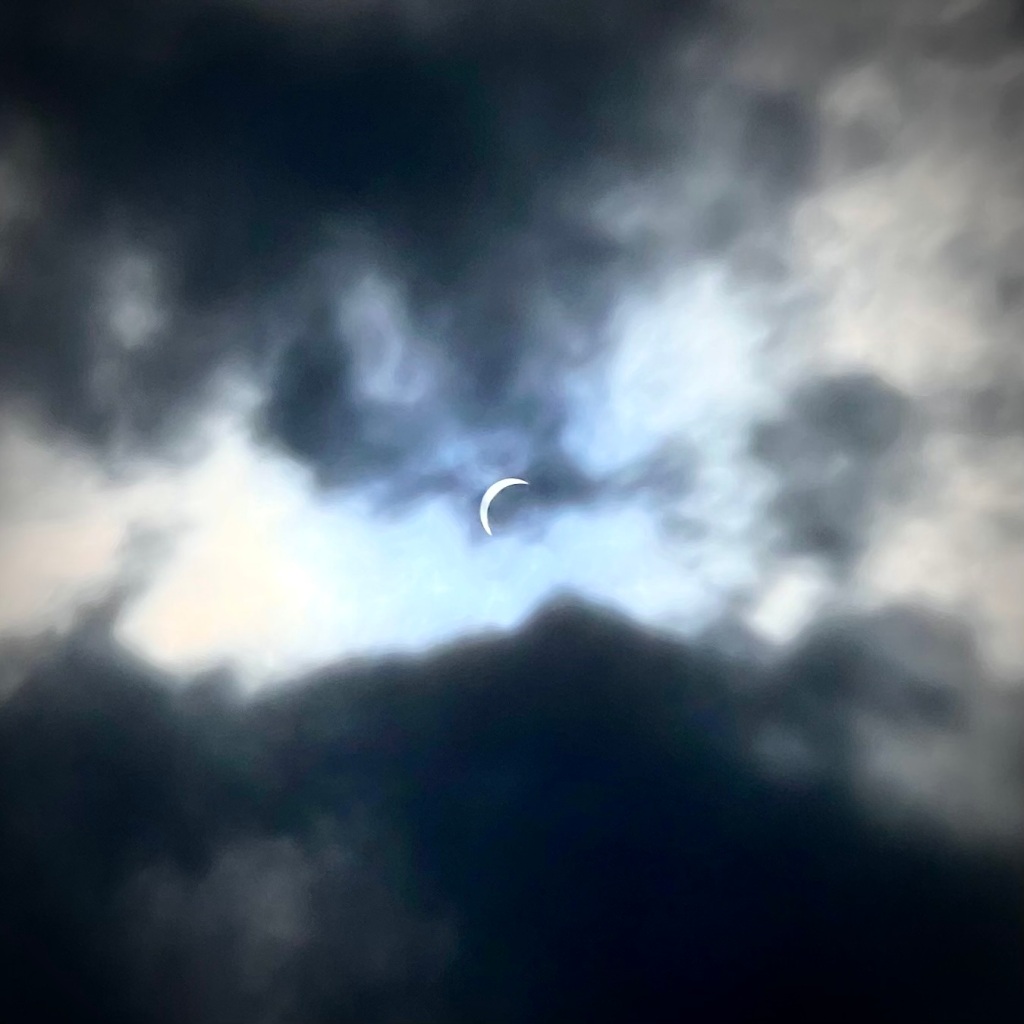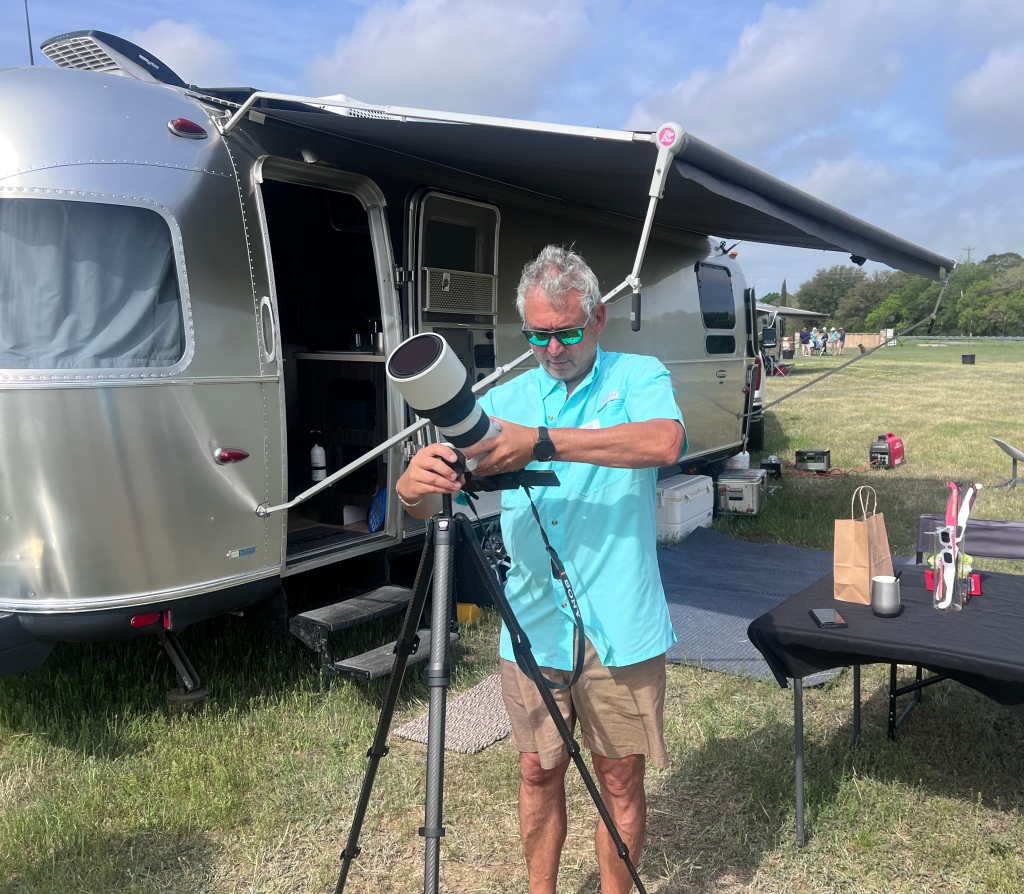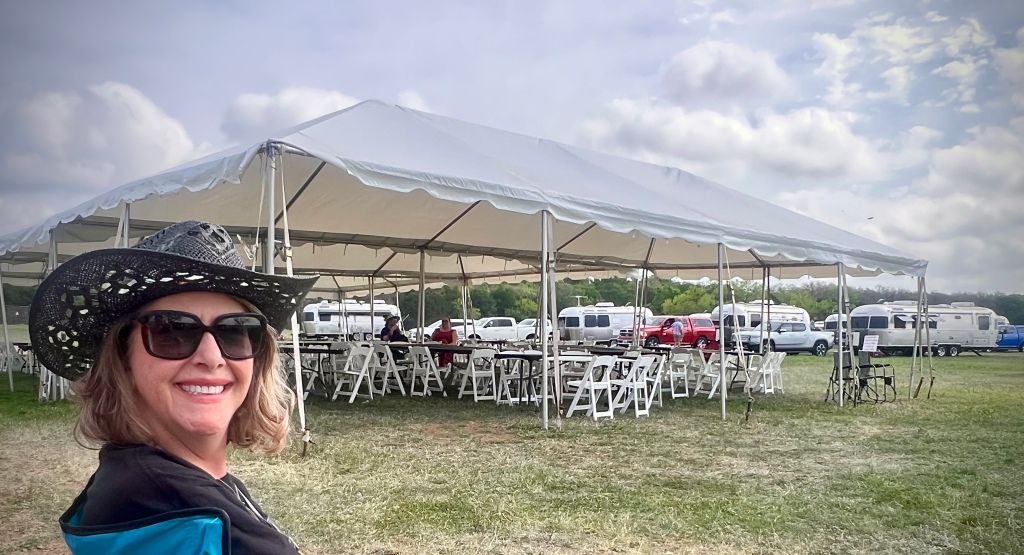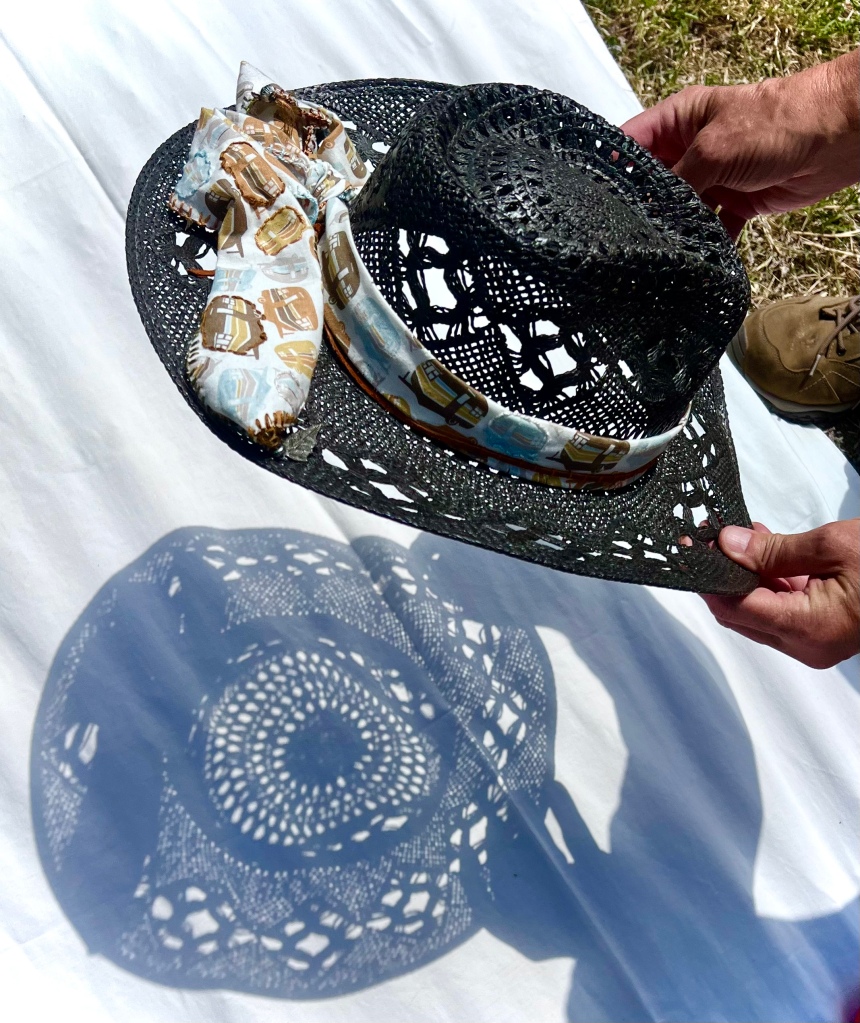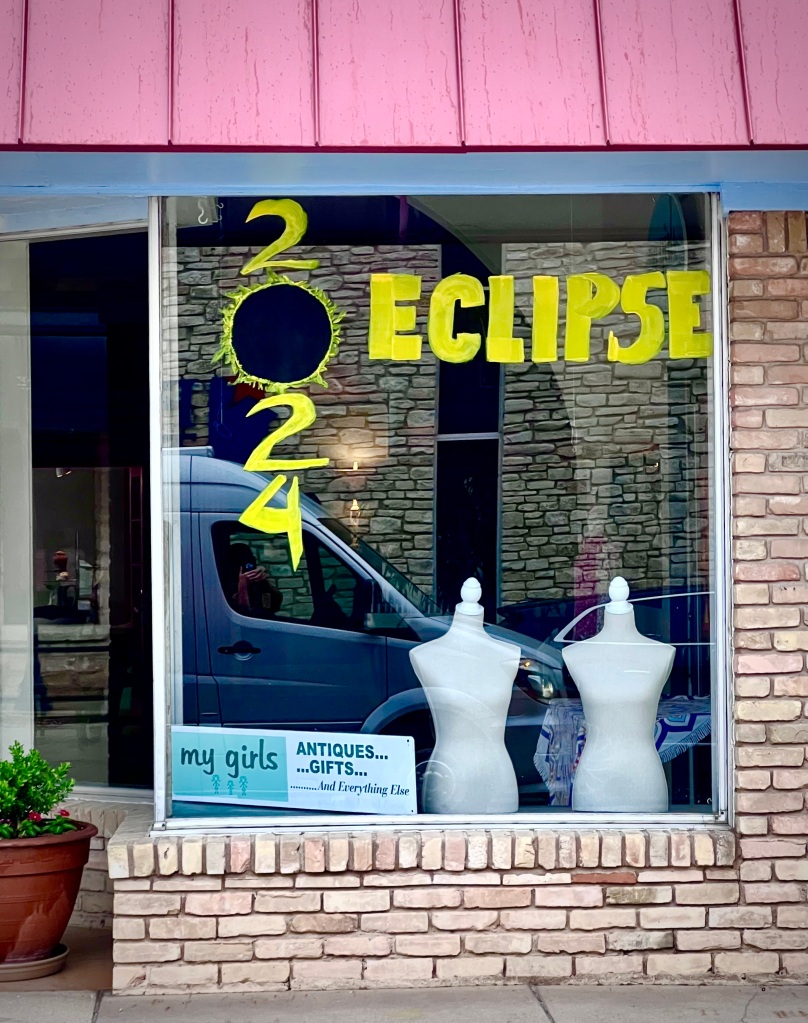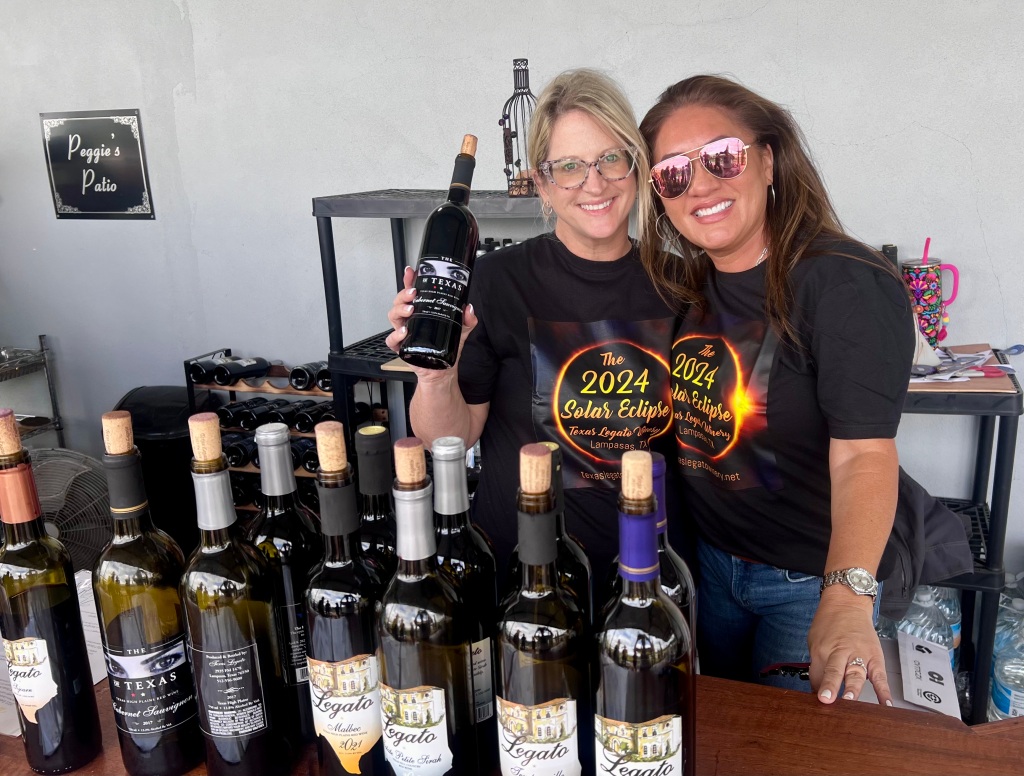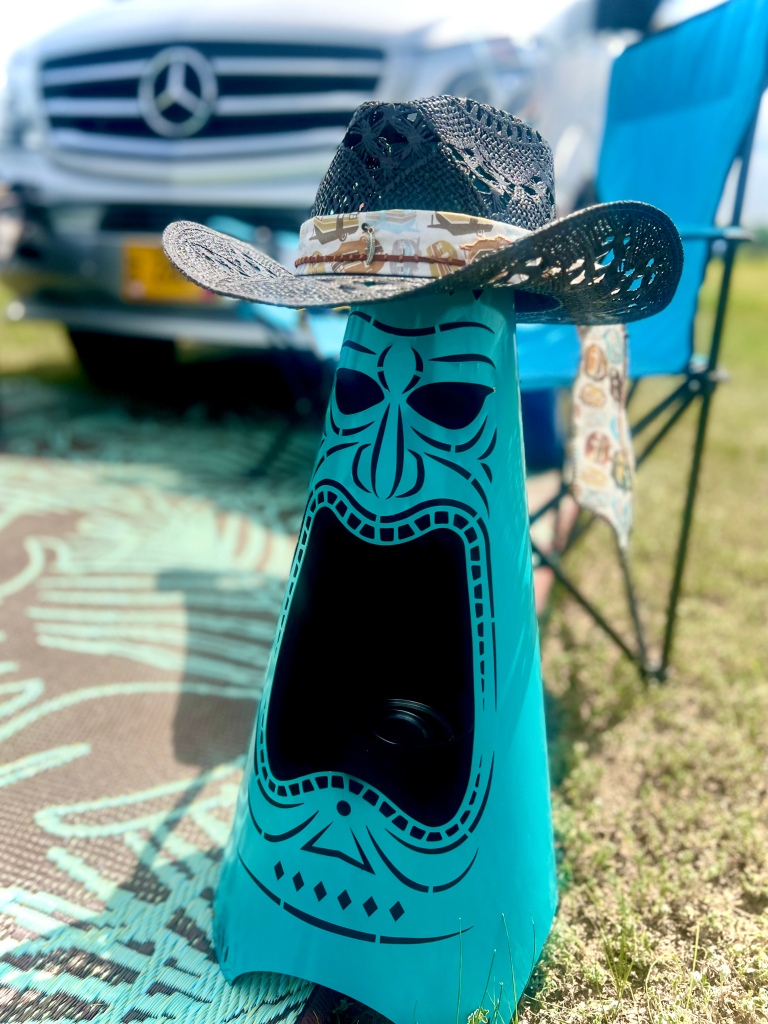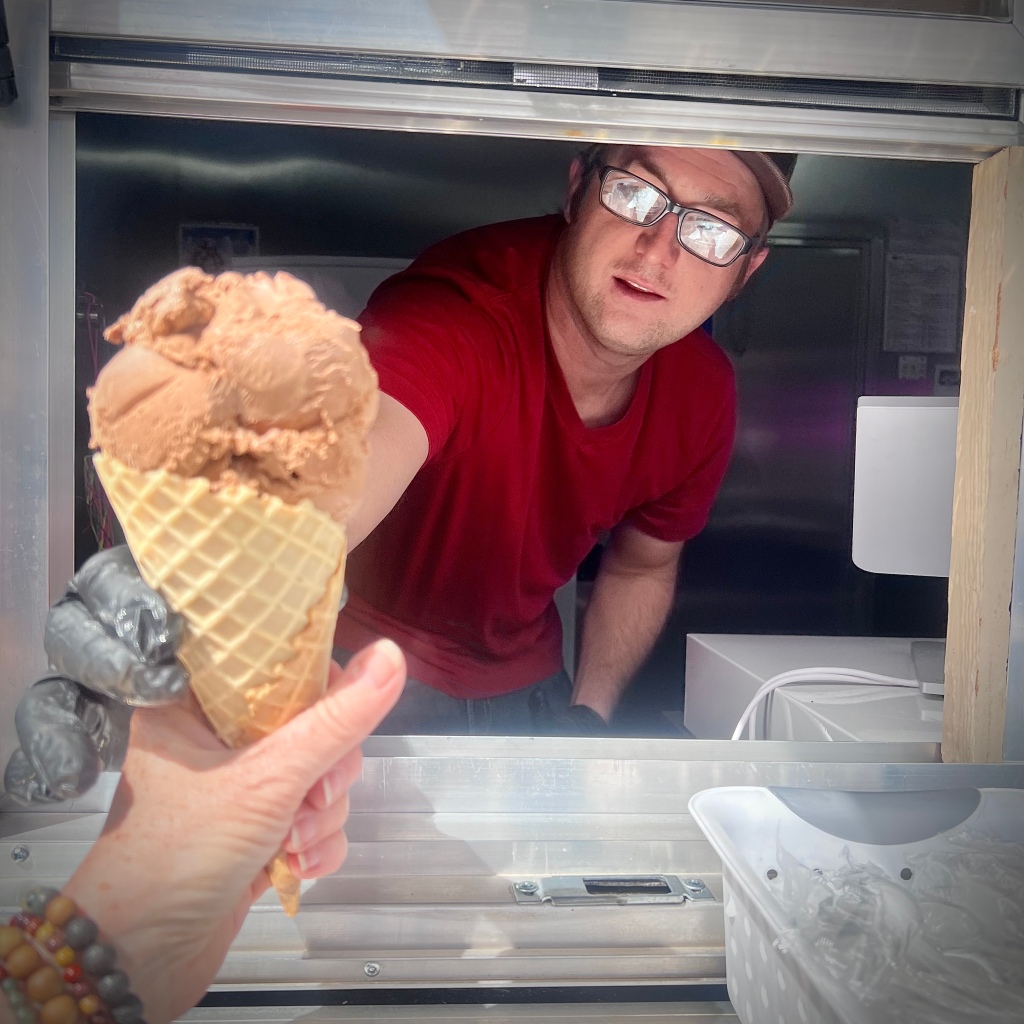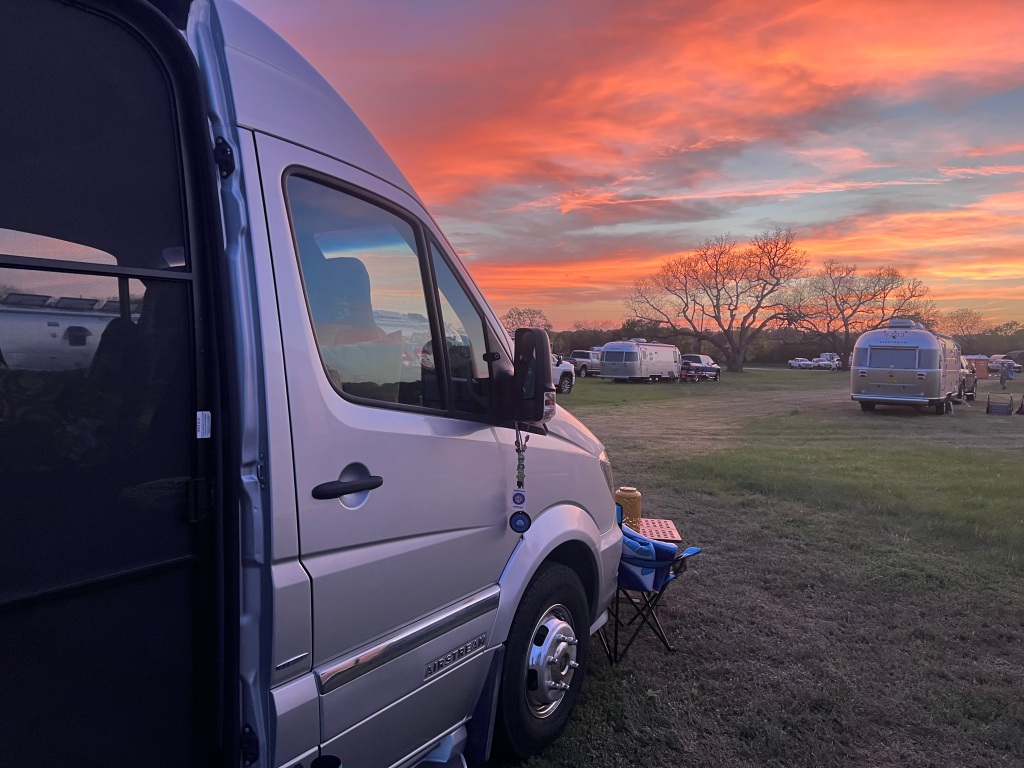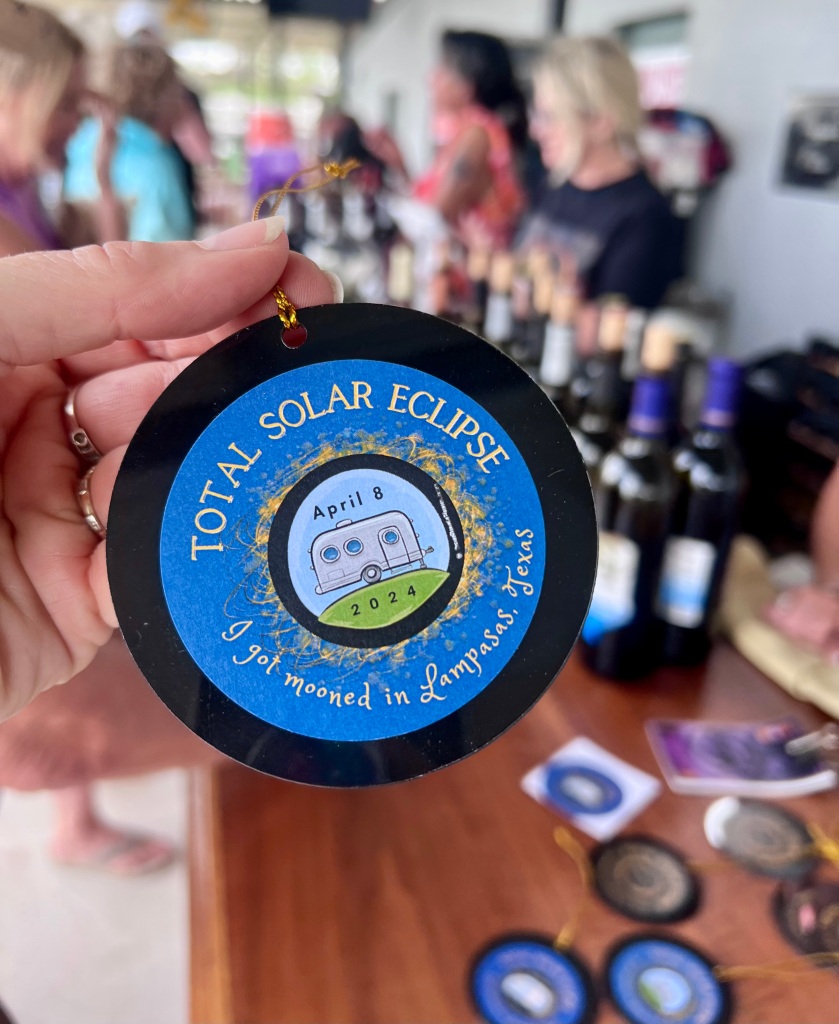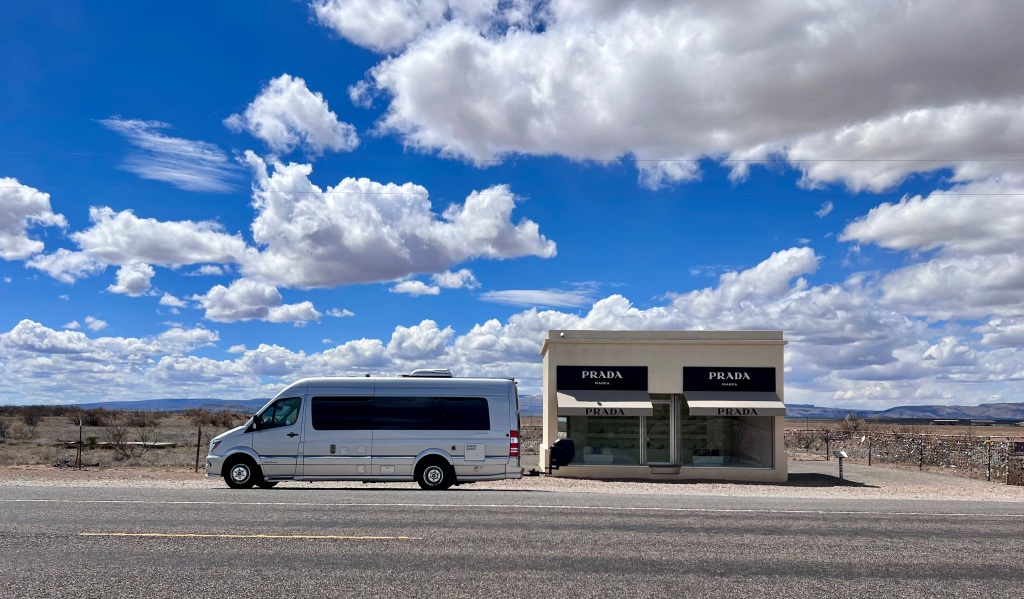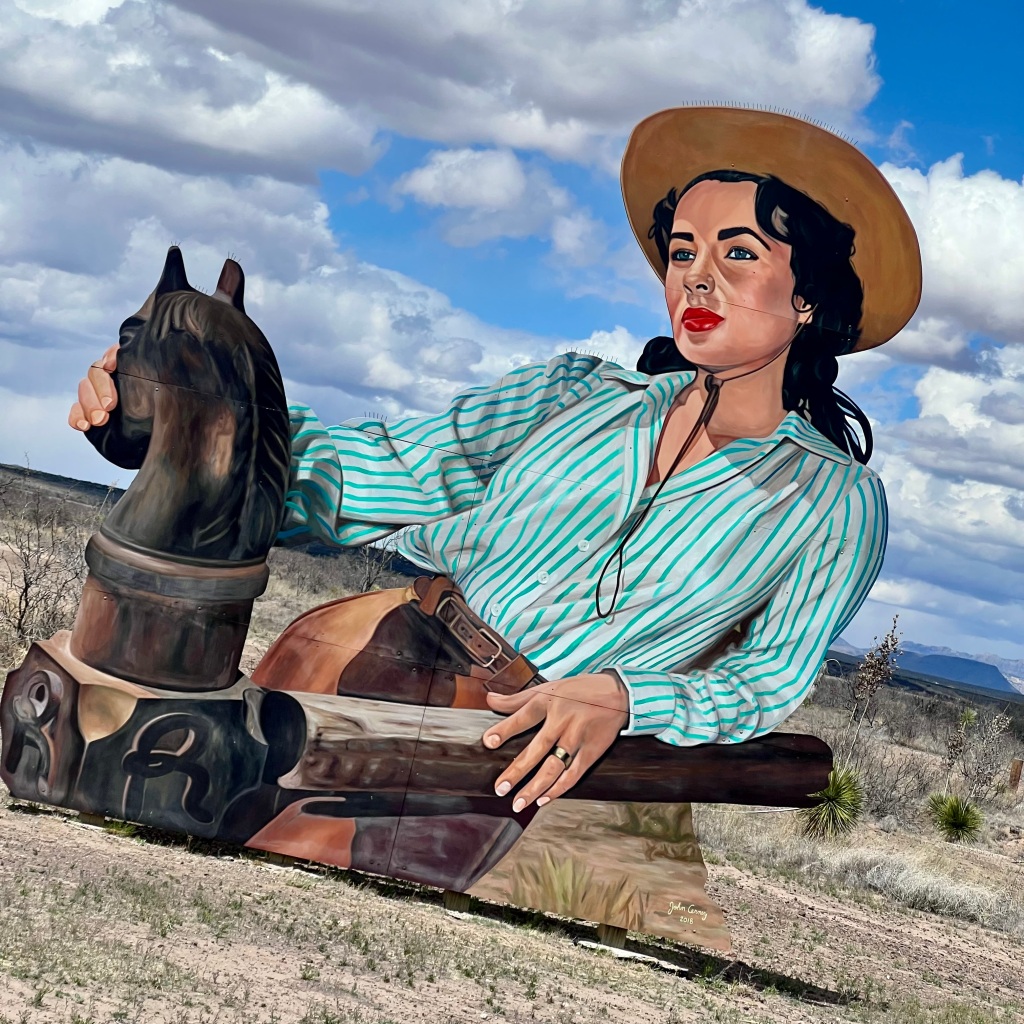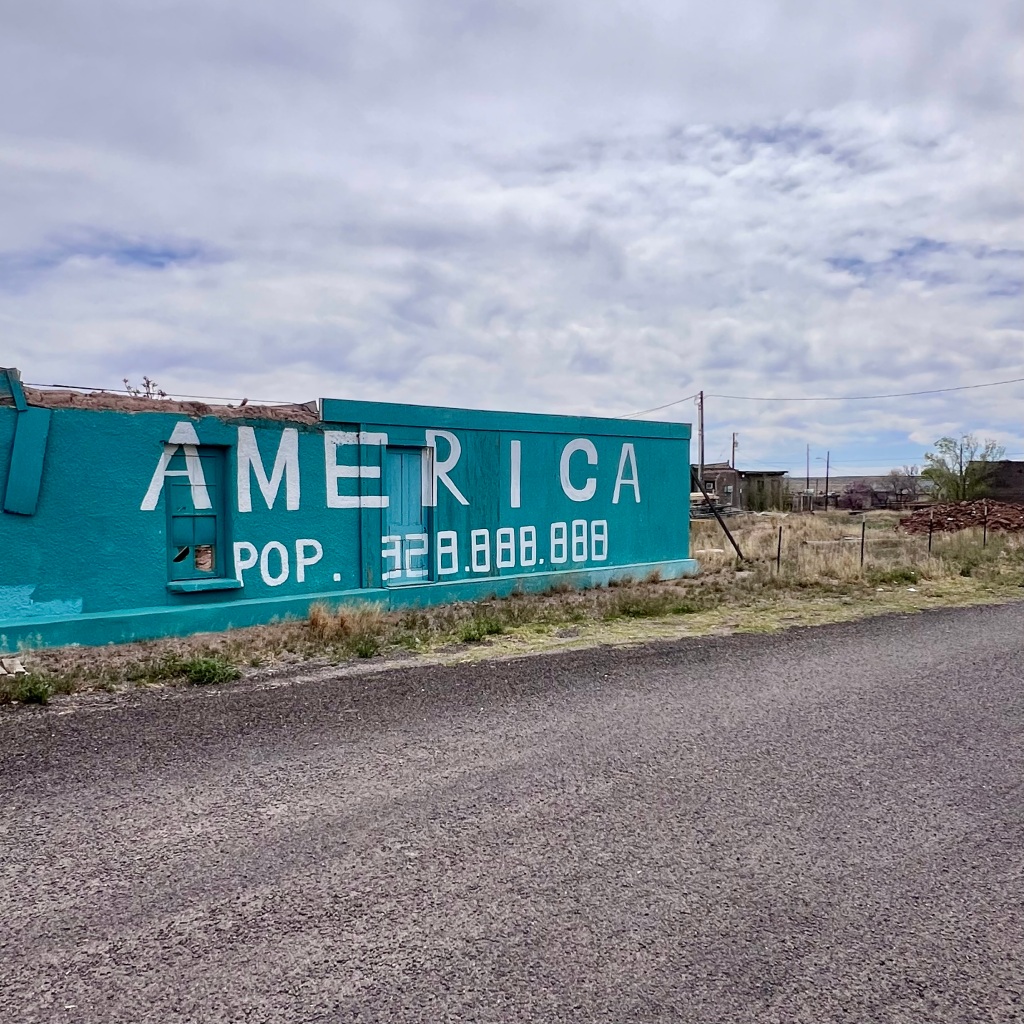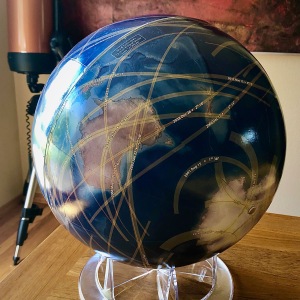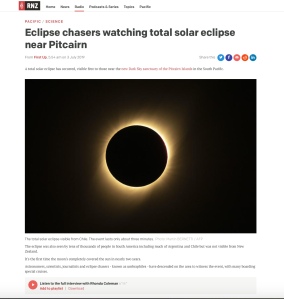There’s a solid wall of clouds outside my Airstream window at 7:30am. By eight the sky is still grey, but growing patchy, and lumpy. Something about the smell in the air tells me it will all burn off and we’ll have a bluebird sky before long.
Sure enough, by 9:00am, Simpsons clouds have formed, the sky is bright azure, and the sun is glinting off the aluminum trailers. I no longer look at the weather report—today will be what it will be, and it looks like a beauty.
By 10:00am, clouds have rolled in again. And then they’re gone. And then they’re back. By noon no one is talking about it, like a no-hitter is underway. The moon takes a little bite of the sun, right on time, at 12:18pm. First contact; TSE2024 has begun.
At 1:00pm—35 or so minutes until totality—the partial phase is at the halfway mark. Clouds quickly come and go.
T-minus twenty minutes. “What do you think?” muses a guy in our little chaser group, clustered together behind a nice scope and camera setup. “80/20?”
“60/40,” says the guy with the scope.
Clouds are building and getting thicker; the time has come to look at the random blue “holes” in the glowering grey sky. Which patch will work in our favor, and allow us to view totality? Which way is the wind blowing? The “taco” banner by the food truck acts as a wind sock.
Other phenomena will be impacted by cloud cover today as well—no approaching moon’s shadow, no shadow bands, limited pinhole projections. The air is cooling, but it’s likely the cloud cover and not the partially eclipsed sun. Yet.
Fifteen minutes to totality. I evaluate the sky. “We’re going to get a nice four-minute hole,” I think to myself. “I can feel it.”
Seven minutes to totality. A great big beautiful slice of blue Texas sky is positioned for success, wafting at the right pace and trajectory toward the sun.
Five minutes to totality. The sun is a fingernail clipping and that weird pearlescent eclipse light has arrived. “It’s like hail weather,” someone observes. That blue patch I’ve wagered all-in on is closing down, growing smaller.
We’re not gonna make it.
Two minutes until totality. It’s suddenly sweater weather, and I’m very chilly, wearing shorts. Hang on—another patch of blue is developing. We WILL see it! Viewers watch and wait, without a word.
No drones were allowed earlier, but now two are flying high in the air, trying for an unobscured shot. Someone nearby has a helpful spoken phenomena coach on speaker: “Diamond ring in one second…remove eclipse glasses now!” The diamond ring struggles to be seen as a thick grey cloud engulfs the sun; everyone makes the “whoah…uuhhhhh…OOOHHHH…ARRRRG!” sound as the shocking totality—just a peek—is visible. Then she’s gone.
Clouds have now stopped moving, determined to obscure our totality. Viewers scream from a faraway field; they must be getting a nice look. I swivel my head to observe the 360degree “sunset”. I sit quietly, anxiously, sadly.
We caught the briefest glimpse of totality again just after maximum (did I see a large red prominence at 5 o’clock?) The voice on speaker says “Fourth contact in three, two…one.” And then it was over.
“That was cool, though!” someone says. Another shouts, “Can we do it again next weekend?”
Fifteen minutes later that stinker Sol—still partially eclipsed, of course—reemerges, shining bright. Great timing, thanks a lot I think. Drained and hangry, I retreated to my Airstream and passed a man along the way. He smiled, and I said, “Well, I guess we try again some other time!” He looked puzzled. “What do you mean?” he said. “We saw it good! In Austin, they had nothin’!”
Surprisingly, other people I spoke to expressed no disappointment whatsoever. “Wasn’t that cool?” they cried. “It was awesome!”
I was confused.
At happy hour, a table of new friends waved me over. How are you doing? they said. Oh, says I. Okay.
“Just okay? Why?”
I truly didn’t know what to say. “Because…the eclipse? The clouds?” I made a thumbs-down gesture.
“What? Oh, it was incredible!” They chimed in together. “We were so lucky to get that little glimpse, that was enough!” “That sky was so amazing!”
“For me, it was the sky,” said a man. “That sky, that darkness…it almost made me cry.”
I felt humbled, and suddenly embarrassed that I brought my spoiled ungrateful Eeyore attitude over to poop on their party.
I finally realized something important, that I hope I’ll pack in my bags for next time.
There’s more to an eclipse, much more. I was so attached to seeing the corona I couldn’t see anything else.
I didn’t set an intention for the day, and never found my feet.
I should have been sketching. I should have been breathing.
I should have been valuing the glory of that great moment of oneness, instead of grasping. Instead of wishing it wasn’t.
TSE 2024 was a thing of exquisite beauty. And I missed it.
